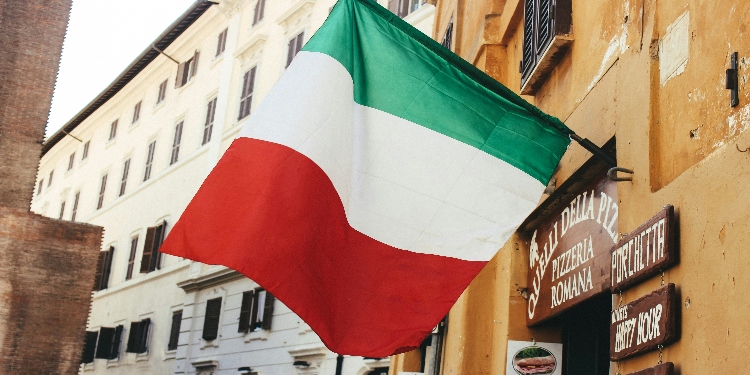If you’re applying for Italian citizenship or any related process involving your heritage, one of the most important documents you’ll need is your Italian birth certificate. As Italy is renowned for offering citizenship through descent, many people from around the world seek to claim Italian citizenship based on their family roots. However, an often overlooked yet crucial step in the process is the Italian birth certificate translation.
Whether you are pursuing dual citizenship, applying for family reunification, or securing benefits tied to your heritage, you’ll need an accurate, certified translation of your Italian birth certificate. In this guide, we’ll walk you through the step-by-step process of obtaining the proper translation and making sure it meets the necessary standards for official use.
Why is Italian Birth Certificate Translation Important?
An Italian birth certificate, like any foreign document, needs to be translated for use in official proceedings in countries where the official language is not Italian. The translation ensures that authorities, including consulates and immigration offices, can understand the document. This becomes especially important for citizenship applications, as Italian law requires official documents to be presented in an official language of the country.
In short, without an accurate translation, your Italian birth certificate will not be accepted by the authorities reviewing your citizenship application. A certified Italian birth certificate translation ensures the translation is both accurate and legally valid.
Step 1: Determine the Type of Translation You Need
The first step in translating your Italian birth certificate is determining the type of translation required. There are generally two types of translation:
- Standard Translation: This type of translation is suitable for informal purposes. However, for official proceedings like citizenship applications, a standard translation is rarely accepted.
- Certified Translation: This is the most common and required type of translation for citizenship applications and other legal processes. A certified translation is completed by a translator who is sworn or accredited, ensuring that the translation is an accurate and legally binding reflection of the original document.
For citizenship applications, you will almost certainly need a certified Italian birth certificate translation. A certified translator must affirm that the translation is accurate and true to the original. The translation must also meet the specific standards of the relevant authorities, including notarization or stamps, depending on the jurisdiction.
Step 2: Choose a Certified Translation Service
Choosing the right translation service is critical to ensure the accuracy and validity of your Italian birth certificate translation. Many translation agencies specialize in certified document translations and have translators who are well-versed in the legal and cultural nuances of translating official documents like birth certificates.
When choosing a service, consider the following:
- Certification and Experience: The translator should be certified or accredited by an official body, such as the American Translators Association (ATA) or other recognized certification organizations. Additionally, ensure the translator has experience with legal documents and understands the importance of precision in translating names, dates, and legal terms.
- Reputation: Check reviews, ratings, and testimonials of the translation service. A trusted translation provider will have a solid track record of delivering high-quality translations on time.
- Specific Experience in Italian Document Translation: Ensure the service has experience with Italian language and documents, as this will ensure they understand the proper terminology and nuances unique to Italian legal documents.
For high-quality Italian birth certificate translation, consider services like Kings of Translation, which specializes in certified translations and provides accurate, timely, and legally accepted translations for citizenship and other legal purposes.
Step 3: Prepare Your Italian Birth Certificate
Before proceeding with the translation, you’ll need to prepare your original Italian birth certificate. It is important to ensure that you are submitting the correct version of your birth certificate for the process you’re undergoing. Typically, consulates and immigration offices will request the long form birth certificate (also called estratto per riassunto dell’atto di nascita), which includes all the details such as the parent’s names, the place of birth, and the date of birth.
Here’s how to prepare:
- Obtain the Original Document: If you don’t already have the original birth certificate, you’ll need to request it from the civil registry office in Italy where the birth was registered.
- Ensure the Document is Official: Make sure that the birth certificate you provide is an official and recent copy. Older or uncertified copies may not be accepted.
- Check for Required Apostille: Some countries may require the birth certificate to be apostilled (an official certification of authenticity), which ensures that the document is legally recognized in the country it is being used. Check with the consulate or the body handling your citizenship application for specific requirements.
Step 4: Submit the Italian Birth Certificate for Translation
Once you’ve selected a certified translator or translation service, you’ll need to submit the original document for translation. The translator will then provide a precise translation of the document, ensuring that all the details, including personal information and official wording, are accurately conveyed in the target language.
The certified Italian birth certificate translation will include:
- A verbatim translation of the original birth certificate.
- A declaration from the translator certifying the translation’s accuracy.
- The translator’s credentials and certifications (if applicable).
In some cases, the translation may also be notarized to further authenticate the process, especially if required by the consulate or immigration authorities.
Step 5: Verify the Translated Document
After receiving the translated birth certificate, it is important to carefully review it for accuracy. Ensure that all the personal information, dates, and names are translated correctly and match the original document. Mistakes in translating even a single word or number could delay your citizenship application or other legal processes.
Additionally, verify that the translation includes the required certification and signatures. If necessary, request a notarized version of the translation to comply with official standards.
Step 6: Submit the Translated Birth Certificate
After verifying that the Italian birth certificate translation is accurate, you can proceed with submitting the translated document along with the original. Depending on the requirements of the immigration office, consulate, or legal body handling your application, you may need to submit both the original document and the certified translation.
Ensure that you keep a copy of the translated document for your records. It’s always a good idea to have a few extra certified copies in case you need them for future applications or procedures.
Step 7: Final Steps in the Citizenship Process
Once your Italian birth certificate translation has been submitted, the authorities will evaluate your citizenship application, along with all the necessary documents. If everything is in order, your application will be processed, and you may soon receive your citizenship or other legal recognition.
In conclusion, translating your Italian birth certificate for a citizenship application is a critical step in the process of obtaining Italian citizenship or recognition. By following this step-by-step guide and ensuring the use of certified Italian birth certificate translation, you can help ensure that your application is processed smoothly and efficiently.










































































